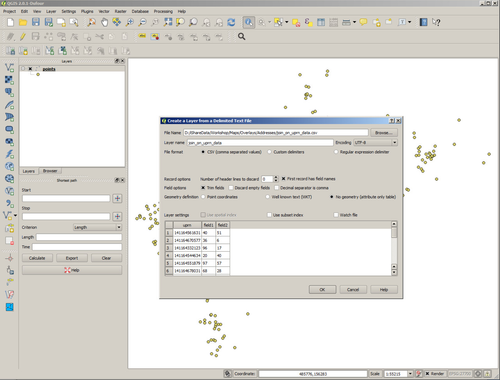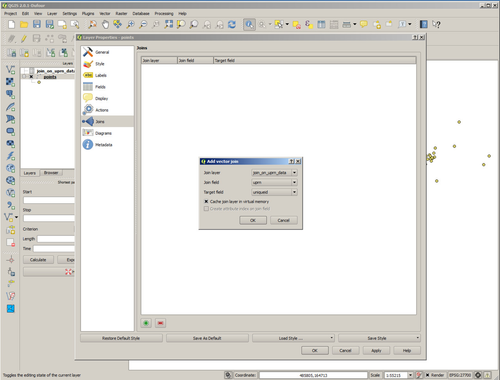| Theme | Data Manipulation |
|---|
| Type | QGIS |
|---|
| Available from | |
|---|
|
Say you have some spatial data and some non-spatial data that you want to join together. Follow the steps below to create the join in QGIS.
Step-by-step guide
- Identify the join field in both sets of data
- Run QGIS
- Load your spatial data. In this example we're using a postgis table containing some address point data. We load the data by selecting the PostGIS icon and identifying the database and the table name. Selecting 'Add' loads the data into QGIS. The identifier in our case is the UPRN.

- Load the non-spatial data. In our case the non-spatial data is in a csv file.

- Open the Properties dialog of your spatial layer and select Joins.
- Create a new Join by selecting the '+' button and identify the non-spatial layer and the fields that are going to form the join.

- Now use the identify tool on the layer and you'll see that the additional fields held in the non-spatial layer are now displayed.

- Make a cup of tea.
| You may also want to use visual panels to communicate related information, tips or things users need to be aware of. |
Related articles
Related articles appear here based on the labels you select. Click to edit the macro and add or change labels.








